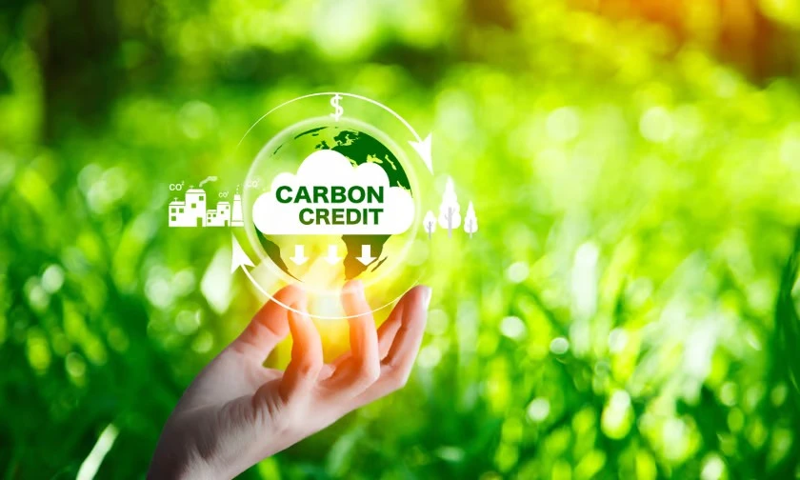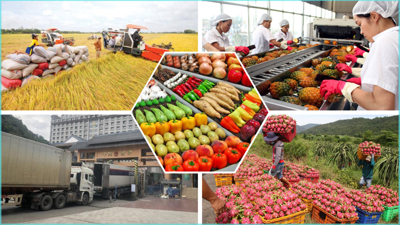Carbon market to develop
Mr. Nguyen Tien Hai, Director of Engineering at the Energy and Environment Consulting JSC (VNEEC), tells Vietnam Economic Times / VnEconomy Vu Khue about the necessity of building an ecosystem to support the development of the country’s carbon market.

How do you view Vietnam’s potential to develop a thriving carbon market?
Vietnam holds tremendous potential in developing carbon credit projects to engage in global carbon markets. Since the early 2000s, the country has been actively involved in various carbon credit standards, particularly the Clean Development Mechanism (CDM), the Verified Carbon Standard (VCS), and the Gold Standard (GS). By March 2025, Vietnam will have registered 274 projects under the CDM, 43 under the VCS, and 45 under the GS. It actually ranks fourth globally in the number of CDM projects and ninth in the volume of carbon credits issued.
Additionally, Vietnam enjoys a unique advantage with a broad range of industries and sectors that can evolve into carbon credit projects, from renewable energy (hydropower, wind, and solar) to wastewater treatment, waste management, agriculture, and forestry.
What challenges do businesses, especially small and medium-sized enterprises (SMEs), face when engaging in both compliance and voluntary carbon markets?
First and foremost, businesses must distinguish between compliance and voluntary markets to chart the right path forward and understand the unique challenges of each.
The compliance market is a government-regulated platform for emissions trading, set to launch in a pilot phase from June 2025 to 2028. During this phase, only around 150 large enterprises in sectors like thermal power, steel, and cement will be required to participate. SMEs, or those in other industries, won’t be involved in the compliance market during this period.
The voluntary carbon market (VCM), meanwhile, is decentralized and driven by voluntary participation. Individuals and organizations can trade carbon credits issued by independent standards such as Verra and GS, without government oversight.
Despite the opportunities, businesses are currently grappling with several challenges when entering the carbon market. One key issue is the limited understanding of how a carbon market works. Many companies struggle to differentiate between the two market types, understand the regulations, or grasp the operational mechanics of the market. This is particularly evident in the VCM, where businesses often lack clarity on how to register and develop credit projects.
Moreover, there is a significant gap in knowledge about emission reduction technologies. Accessing and implementing advanced solutions to cut emissions remains a barrier, especially for smaller businesses.
Finally, data collection and management pose a real challenge. Setting up systems for monitoring, reporting, and verifying (MRV) emissions and reductions is still new for many businesses and requires substantial resources. Financial constraints make it even more difficult for SMEs to invest in emission reduction technologies, build MRV systems, or cover costs related to developing and registering projects. These challenges are particularly daunting for smaller businesses, which struggle with the financial burden and resource requirements.
What should the government do to overcome these challenges?
The government is a pivotal player in driving the development of the carbon market in Vietnam and addressing the barriers faced by businesses. Surveys assessing the private sector’s readiness to enter the carbon market reveal that many businesses stress the importance of having a clear and transparent legal framework, complete with specific regulations and guidelines to ensure smooth market participation.
A major challenge at the moment is financial constraints, especially when businesses are implementing emission-reduction measures. Financial institutions and banks can provide crucial support here. To make the most of available resources, the government needs to refine its green finance policies and establish clear guidelines on which types of projects or initiatives qualify for financial assistance from these institutions.
In addition, to boost awareness and encourage more businesses to join the carbon market, the government should ramp up communication efforts. This outreach should include information on existing regulations, policy updates, insights into global emission-reduction technologies, the benefits of entering the carbon market, and success stories from businesses that have registered and implemented carbon credit projects.
How can consulting firms assist businesses in overcoming the challenges of entering the carbon market?
Consulting firms can become key strategic allies for businesses, guiding them step-by-step as they navigate the carbon market. They can support businesses in setting up and implementing MRV systems for emissions and reductions, organizing capacity-building sessions on the carbon market, providing updates on cutting-edge emission-reduction technologies, and assisting in the development of credit projects while facilitating connections with potential buyers and sellers in the voluntary market.
That said, many businesses still face challenges in accessing specialized consultants for this process. Vietnam currently lacks a dedicated platform where businesses can easily access essential information on the carbon market and connect with the relevant stakeholders who can help them navigate these opportunities.
This underscores the need to build an ecosystem that supports the growth of the carbon market, one that includes a network of researchers, experts, consulting firms, and businesses. Such an ecosystem would act as a bridge for sharing market knowledge, advancing technological solutions, and connecting project owners with investors, developers, and potential buyers of carbon credits.
What key factors do you think are essential to stay competitive in the market and successfully operate a carbon exchange?
Transparency is absolutely critical in creating a carbon market that not only functions effectively but also meets international standards. When it comes to quota allocation, the government must ensure that the entire calculation process is precise, fair, and based on reliable data, while using transparent methods to ensure trust and compliance from businesses.
For carbon credits entering the exchange, transparency needs to be guaranteed through clear regulations about which credits are eligible and the MRV methodology allowed. This ensures that the credits issued are both reliable and of high quality.
Additionally, the entire process of managing and trading credits and quotas must be closely regulated and monitored by the government to ensure fairness and prevent any fraudulent activities. A consistent and transparent legal framework will not only enhance the trust of market participants but also be key in encouraging the supply of credits by motivating businesses to actively develop emission-reduction projects and participate in the exchange’s compensation mechanisms.
As part of the goal of establishing and developing a carbon market in Vietnam, the country plans to pilot a domestic carbon exchange from June 2025 to 2028, with official operations starting in 2029. Given the current context, do you believe it can achieve this target?
With the carbon market still in its early stages, only a few countries and regions, such as the EU, the US, Canada, South Korea, and China, have successfully established and operated emissions trading platforms. Even for these developed nations, building, testing, and refining their systems took years and came with significant challenges.
In Vietnam, the pilot phase for the domestic carbon exchange will run from June 2025 until the end of 2028. There’s still much to be done in this period to build a robust, transparent system that fits the domestic context.
This journey will require strong, consistent efforts from the government and crucial technical and financial support from international organizations, helping Vietnam to gradually build a resilient carbon market foundation and align with global standards.







